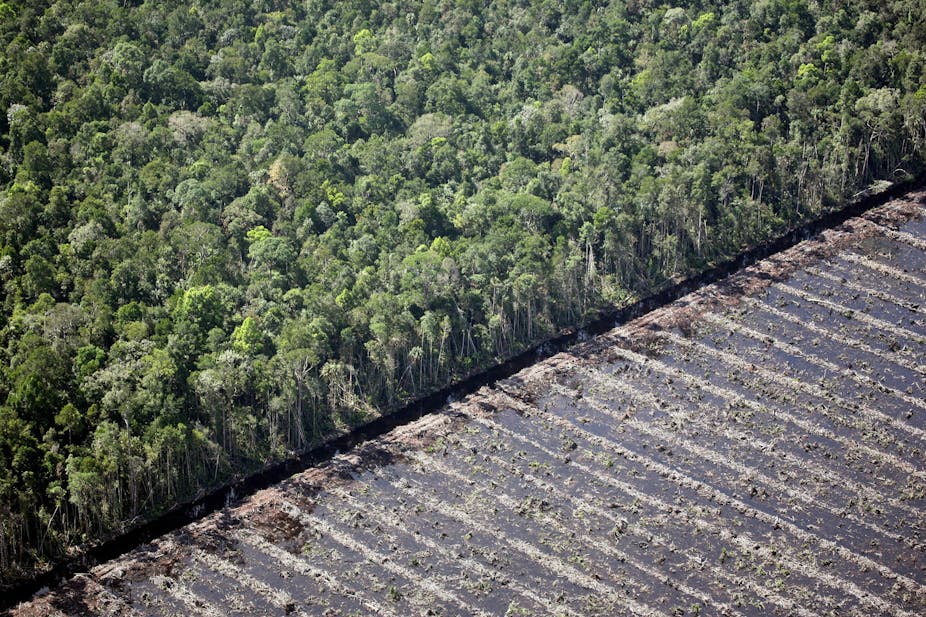In the developing world, there’s often a face-off between conservation needs and the needs of the community, with neither coming out all that well.
Is it possible to “save more space for nature” without encroaching on human rights?
Historically, conservation initiatives have pitted the protection of valued environments against their continuing use by local people.
The iconic parks of Yosemite and Yellowstone were established by evicting resident indigenous communities in the 1800s, and conservation-related evictions continue into the current millennium.
In the developing world, restricting people’s access to resources in conservation areas has contributed to economic displacement and social vulnerability.
With social scientists and advocacy groups bringing this tarnished history to light, the conservation profession has tried to reconcile conservation and human welfare.
In recent years, conservation organisations have used a number of approaches. Some programs have set up development projects in conserved landscapes; these might include ecotourism or promoting sustainably harvested products.
Others take to a more negotiated approach, making various arrangements with local people for collaborative management.

Conservation narratives are no longer just about saving species. They have been infused with the language of poverty alleviation, sustainable development and the Millennium Development Goals.
But outcomes on the ground have been harder to achieve.
Issues too big for ecotourism to solve
Fundamental weaknesses in the design and implementation of development ventures such as ecotourism have reduced their long term viability.
Many have been top-down enterprises with limited local ownership and control. New opportunities for income and other benefits have contributed to conflict in some communities.
Conservation and development projects are generally focused at the local level: they may fail to deal with wider political and economic threats to resources.
In Papua New Guinea, international conservation NGOs found it difficult to pitch ecotourism to landowners: landowners could make a lot more money from logging.
In the Philippines, a proposal for a major highway threatened any potential environmental gains from a locally based integrated conservation and development project. The lead NGO found the local project wasn’t enough to save species: it had to convince the planning agencies to re-orient the road.
Activities like ecotourism can be seen as “silver bullet” solutions to complex development dilemmas. But it’s unrealistic to expect one ecotourism or resource harvesting enterprise to improve health, education and other economic development for everyone in a community, when many other factors could be holding a community back.
Other forms of rural development have shown for decades that development doesn’t work unless it responds to broader social, economic and political challenges. But conservation professionals have failed to learn from this.

Paying people to save the planet
These days there’s a wave of enthusiasm for market-based conservation instruments - the new “silver bullet”. Ecosystem service schemes, for instance, pay local people who can show that they have taken steps to improve conservation.
The main point of difference from earlier approaches is that the stewards only get paid if they can show conservation efforts have improved.
But in practice, making payments conditional on monitoring outcomes is proving very difficult in developing countries. Our recent book highlights this problem in several schemes from Asia to Latin America.
But at least this new approach recognises that trade-offs are inevitable and need recompense. It raises some important questions: What kinds of trade-offs are acceptable? Who bears the costs and gains the benefits in such trade-offs? And do local people have enough power to negotiate an equitable deal?
Not a win-win situation
Bodies like the World Conservation Union are trying to answer these kinds of questions. They say we need to recognise that the different groups involved in conservation efforts have different things they want to achieve. Any program has to negotiate appropriate trade-offs among them.
So far there hasn’t been a thorough analysis of whether this kind of negotiated approach is working. In my experience such approaches may not do as much for conservation.
However, if enough affected people are included in negotiations, the programs that come out may at least be more viable and sustainable.
A key paper on this subject states that “Providing more space for nature often requires constraining people’s lives and activities.”
If we accept that both sides can’t win, then it is important we look carefully at how any trade-offs are negotiated, and who bears the costs or gains the benefits.
A more politically and socially informed approach, which actively and transparently engages in negotiation around the question of trade-offs, will serve conservation organisations better than relying on “silver bullet” solutions.

